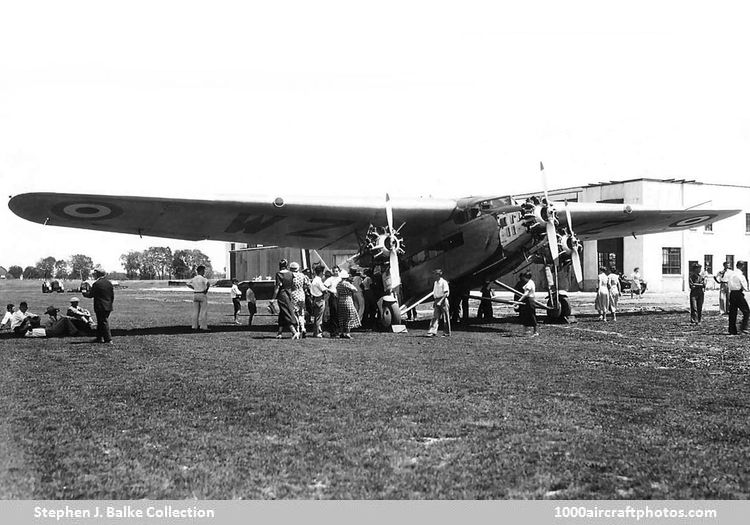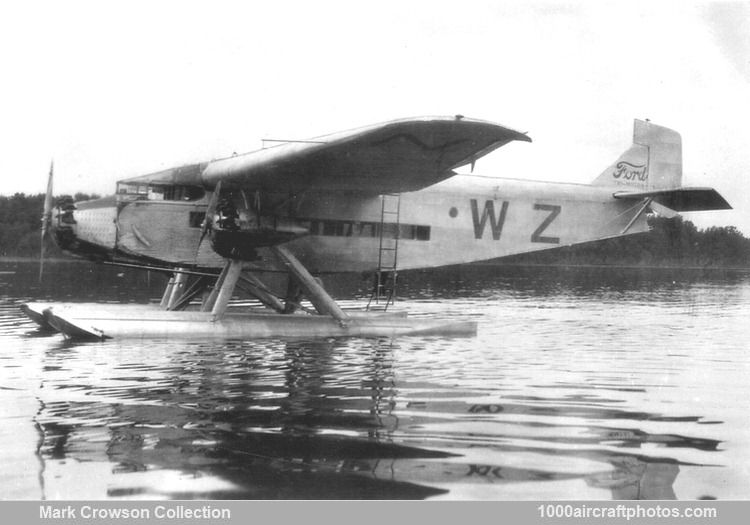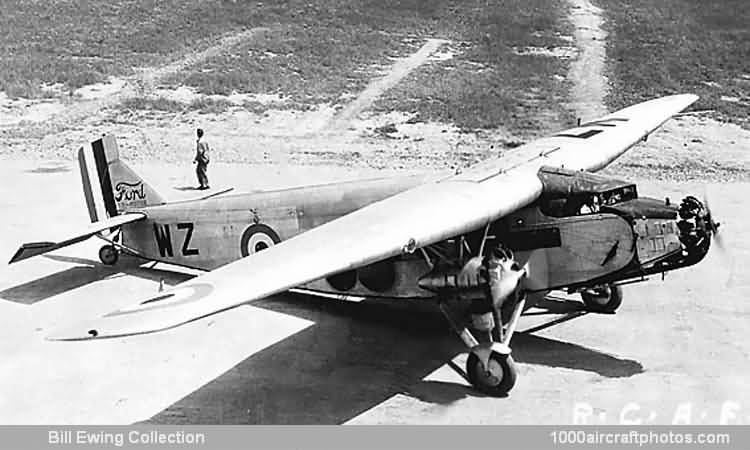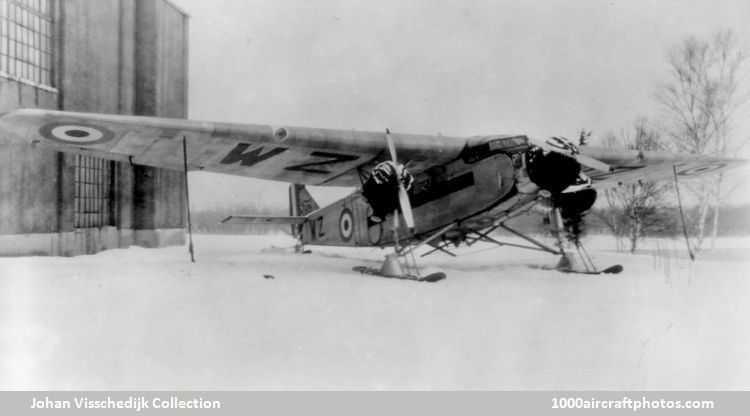RCAF WING COMMANDER STEPHEN J. BALKE MEMORIAL COLLECTION
No. 3251. Ford 6-AT-AS Tri-Motor (G-CYWZ c/n 6-AT-1) Royal Canadian Air Force
03/31/2022. Remarks by
Johan Visschedijk: "The tri-motored model 6-AT-A was one of the non-standard versions in the Ford Stout series, and was basically planned and calculated to handle the maximum capacity and payload with the utmost in operating economy. Being of almost special-purpose category, it was actually a hybrid aircraft with the larger wing span and larger cabin interior of the 5-AT-C, and the more economical power installation of the model 4-AT-E. This resulted in a large capacity transport that could operate with good efficiency in the strictest economy.
Powered with three 300 hp Wright J6 nine-cylinder air-cooled radial engines, the model 6-AT-A was a combination hampered by some loss in performance, but the loss in performance was a fair exchange for the increased payload and the economy gained. The model 6-AT-A normally had seating for fifteen, and with the cabin seats removed had a volume capacity of over 500 cu.ft (14.16 cu.m) to carry better than 2,800 lb (1,270 kg) of payload. Performance of the model 6-AT-A was more or less comparable to the J5 powered 4-AT-B, but was quite adequate for the job intended.
The Stout Metal Airplane Co., a division of the Ford Motor Co. at Dearborn, Michigan only manufactured three examples of the model 6-AT-A, but they led a very active and rather interesting life.
G-CYWZ on floats (
Mark Crowson Collection)
The first example was purchased by the RCAF for government-sponsored tests and experiments in 'forest dusting'. Intended operating in the timber areas from the lakes and rivers of Canada, it was completed as a model 6-AT-AS seaplane fitted with Brewster floats on May 28, 1929 and subsequently test flown. Despite the military markings the aircraft was registered on the civil Canadian registry as G-CYWZ, only the last two characters were applied on the aircraft.
G-CYWZ was initially approved as two-seat seaplane on a Group 2 Approval numbered 2-80 on June 14, 1929, two days later the aircraft was delivered to the RCAF, while the same month the first tests spraying of hemlock forests took place near Westree, Ontario. Flying as low as 20 ft (6 m) above the tree-tops, the aircraft carried up to 1,400 lb (635 kg) of arsenate dust and could lay a swath of pest extermination some 250 ft (76 m) wide. Similar tests in Quebec later in 1929. The experiments of 'dusting timber' had proven quite successful, and were carried on with this same aircraft for several more years.
Besides spraying, G-CYWZ, based at Rockcliffe, Ontario, was also used as a transport, which was made possible by the reissue of the Group 2 Approval numbered 2-80 on November 8, 1929 for a twelve-seat aircraft. It carried VIPs from Ottawa to St. Hubert to view and ride on the British airship R100 during its visit to Canada in 1931. Also in 1931, it was a support transport for the RCAF's aerobatic team, the Siskins, on their Trans-Canada Air Pageant.
G-CYWZ at St. Hubert, Quebec, June 1934 (
Bill Ewing Collection)
It appeared at an air show at RCAF Station Trenton, Ontario in June 1934, while in that month it was also
pictured at St. Hubert, Quebec. In September 1935 it was used in trials with the Lear radio compass, and it was struck off charge on February 25, 1937.
On March 24, 1937, the aircraft was registered as CF-BEP to United Air Transport, it was lost two years later. On 2 Mar 1939, while parked at Vancouver airport, a RCAF Hawker Hurricane (serialed 312) swerved off the runway during take off and crashed into the Ford Tri-Motor. Both aircraft were destroyed.
G-CYWZ on skis (
Johan Visschedijk Collection)
The sole model 6-AT-AS was one of the few Ford Tri-Motors that would operated on wheels, skis, or floats, and the first large airplane to be used successfully as a "duster"."



